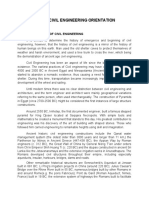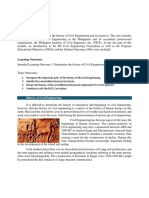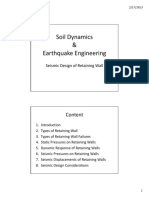0% found this document useful (0 votes)
10 views12 pagesCEE101 Assignment
The document is an assignment from Bayero University, detailing influential civil engineers and their contributions in the 21st century, as well as listing ten famous modern civil engineering edifices. It highlights notable figures such as Jeffrey S.B.K. Wu, Fazlur Rahman Khan, and M. Sami Hamood, focusing on their innovative projects and impacts on the field. Additionally, it mentions significant structures like the Burj Khalifa and the Oresund Bridge, emphasizing their engineering challenges and achievements.
Uploaded by
ahmaduabaiyadhCopyright
© © All Rights Reserved
We take content rights seriously. If you suspect this is your content, claim it here.
Available Formats
Download as DOCX, PDF, TXT or read online on Scribd
0% found this document useful (0 votes)
10 views12 pagesCEE101 Assignment
The document is an assignment from Bayero University, detailing influential civil engineers and their contributions in the 21st century, as well as listing ten famous modern civil engineering edifices. It highlights notable figures such as Jeffrey S.B.K. Wu, Fazlur Rahman Khan, and M. Sami Hamood, focusing on their innovative projects and impacts on the field. Additionally, it mentions significant structures like the Burj Khalifa and the Oresund Bridge, emphasizing their engineering challenges and achievements.
Uploaded by
ahmaduabaiyadhCopyright
© © All Rights Reserved
We take content rights seriously. If you suspect this is your content, claim it here.
Available Formats
Download as DOCX, PDF, TXT or read online on Scribd
/ 12
























































































